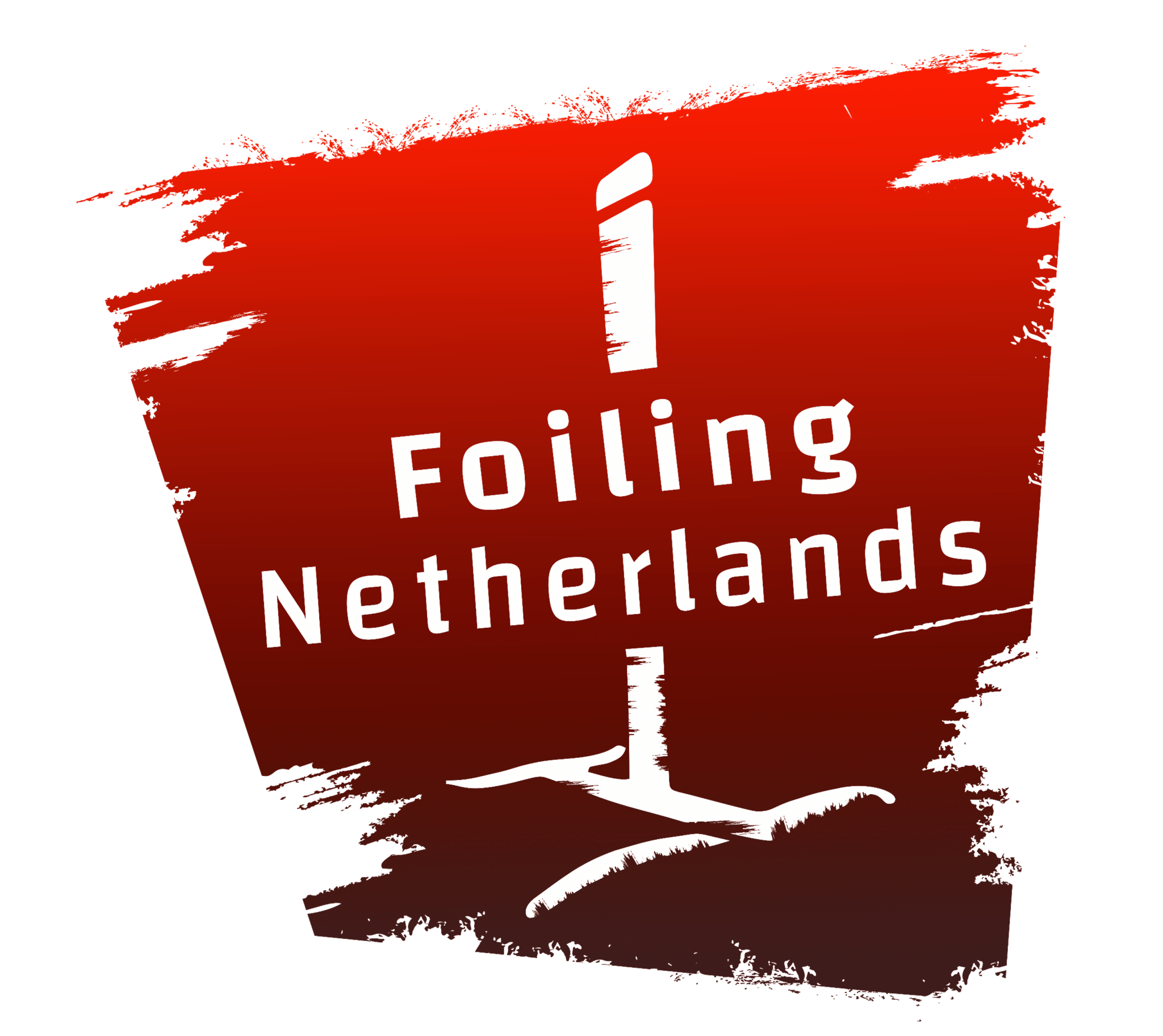With the introduction of the Starboard UCS system, all of Starboard’s wing series can be used at once for both wingfoiling and windfoiling. But how do you choose among the 6 different wingseries? To prevent you from not seeing the wood for the trees, below you will find an overview of all wing series with an explanation of what the features are and for which ‘ride style’ the series is best suited.
So what “ride styles” are there?
We try to make it as simple as possible. We divide all wingseries into 5 categories, lumping windfoilers and wingfoilers together. To know:
- Beginners: Benefit most from stability, easy take off and an easy and predictable foiling behavior
- Freeriders: In general, freeriders want an all-around set up with a wide range of use. Including an average dynamic foil feel, without necessarily putting a lot of effort or having good technique. This group foils especially half-wind.
- Freestylers: Experts who want a foilset up that accelerates quickly, is extremely maneuverable and works well with relatively small wings/sails
- Racers: Experts who focus on maximum speed and/or race foiling. Maximum end speed and good control “on the edge” are important features the wingset must have. In this segment, another distinction can be made between slalom foiling (half wind/wide wind) and course racing (upwind/downwind)
- Pumpfoiling / Down wind: A category known only within wingfishing. In both cases, a very efficient wingset with extremely good glide, sufficient elevator and the ability to “pump” are important aspects.
With this format, we think most foilers will feel “at home” in something. You will find that some wingseries do not always fall very clearly into 1 of these segments. In some wingseries, there is quite a bit of overlap.
Starboard S-type MKII series for beginning foilers
The Starboard S-type wingseries is characterized by relatively large surface areas and a relatively small wingspan (low aspect). Because of its large surface area, this wing series gets airborne relatively easily and also feels relatively stable. So ideal for learning to foil.
Another feature is that this wing series is not very fast. Which is a nice touch for many novice windfoilers and/or wingfoilers 🙂 because it gives them earlier control of the foil.
S-type for wingfoiling:
Of the S-type, the sizes 1800 and 2200 cm2 front wings are most suitable for the novice wingfoiler. For wingers weighing about 85 kg, an 1800 cm2 front wing is large enough. If you are heavier then the 2200 cm2 is the best option. Combine it with a relatively large stabilizer, the Freeride 330 or Pro 220 cm2 for optimum stability.
S-Type for windfoiling:
Of the S-type 1500 and 1800 cm2 front wings are most suitable for novice windfoilers. The very largest front wing (2200 cm2) will soon give far too much elevator, making the windfoil set uncontrollable. For windfoiling, the S-type is best combined with a Freeride back wing 330 or 500 cm2 for optimal stability.
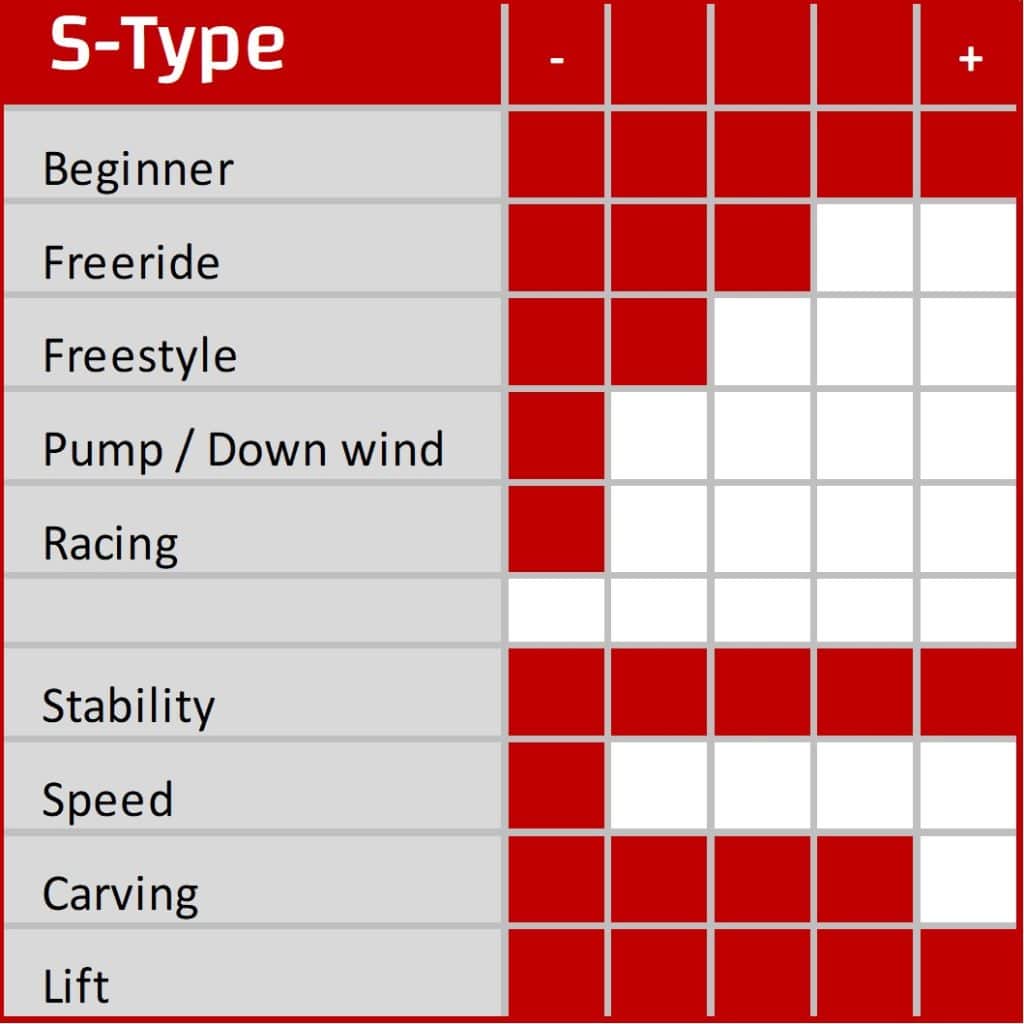
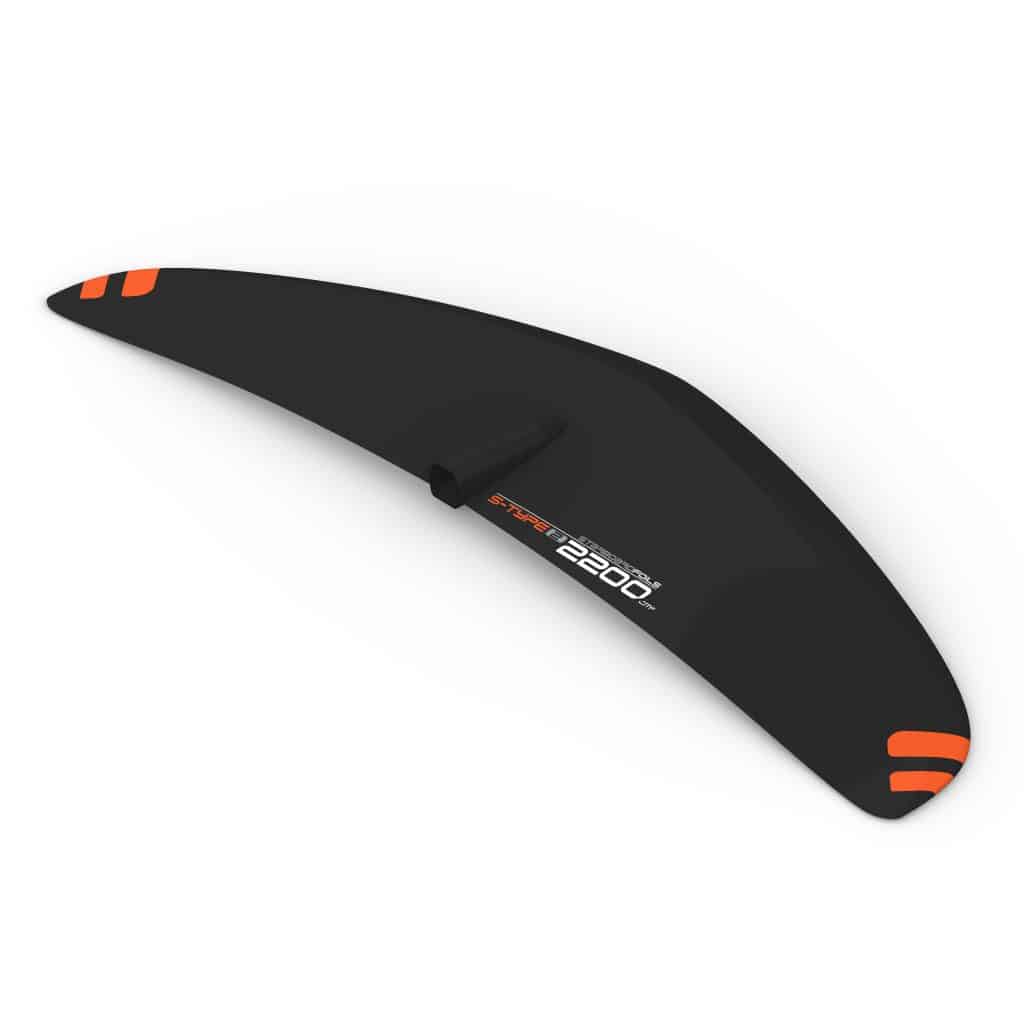
Starboard E-type MKII wingseries
The larger sizes of the E-type wingseries, the 1800 and 1400, are suitable for beginning foilers. Relative to the S-type, the E-type has a larger wingspan and has a better glide than the S-type. The E-type is clearly faster and more dynamic in handling. Relative to the S-type, the E-type is a little less easy than the S-type to learn wingfishing. Although it doesn’t make a huge difference (for the large sizes).
The smaller size E-types (as well as the E-Type PRO versions) from 1100 cm2 and smaller have a more all-around character. These wingsets are the ideal wingsets for Freeriders. This wing series has an ideal mix between, good stability, very good maneuverability, wide applicability, fast take off and they are also very fast (if you want). The PRO versions are a little faster, but are a little less maneuverable. These 2 E-Type PRO wings have a bit more Freerace “genes.
E-Type for wingfoiling:
From the E-type series, the 1400 and 1800 cm2 are most suitable for novice wingfoilers. The 1400 cm2 is best suited for lighter people up to about 70 kg. If you are heavier then you better choose the 1800 cm2. These E-type front wings match best with the PRO 220 stabilizers.
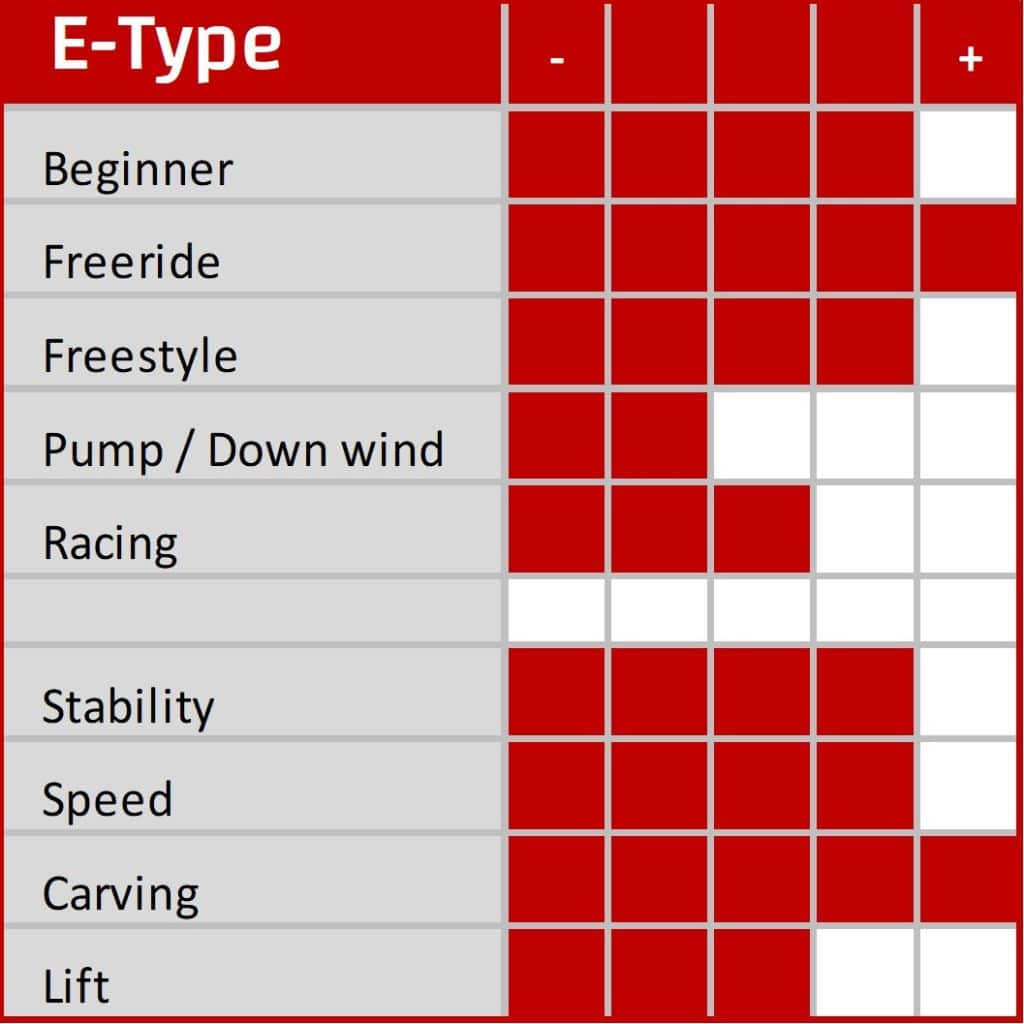
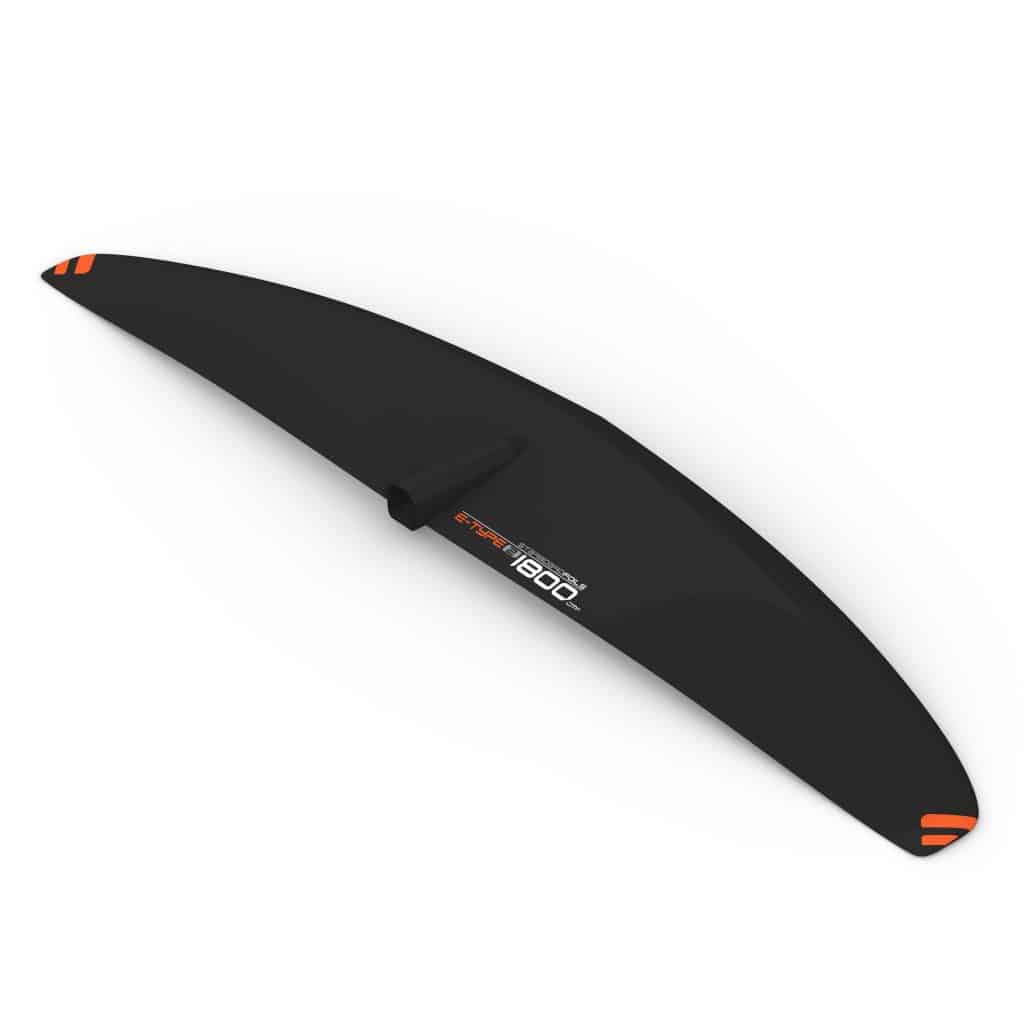
Sizes 900 and 1100 are ideal sizes for the intermediate freerider with an advanced level. At these sizes, the dynamic properties come out a bit more clearly. Maneuverability is particularly good and speed is also noticeably higher. This without having to compromise on stability and early take off. These sizes match very well with the PRO 180 or Pro 220 if you are looking for extra stability. The E-type 1100 and 900 PRO lean slightly more toward racing, due to a slightly thinner profile and speed-oriented shape. The E-type PRO also combines the best with the PRO 180 stabilizer.
The very smallest sizes (the 625 and 750) are also used by wingfoilers for freestyling. These sizes excel in extremely good handling, explosive acceleration, high end speed and with still a good take off. The 2 smallest sizes give relatively high elevator. These 2 sizes match best with the PRO 180 stabilizers.
E-Type for windfoiling:
For the novice windfoiler who wants a slightly more dynamic and faster foil, then the E-type 1800 cm2 is a good choice. If you combine this size with a Freeride 330 back wing you have a very stable set up that is faster than the S-Type.
Lighter persons (75kg or lighter) are better off learning to windfoil with 1 size smaller, the E-type 1400. This size pairs well with the Freeride 330 back wing or the PRO 220.
For freeriding, the E-type 1100 and 900 are very popular sizes. The E-type 1100 PRO and 900 PRO have a faster shape and lean more toward freeracing. Both the regular and E-Type PRO wings are best combined with the PRO 220, PRO 180 back wing or possibly the SLX 160 back wing for higher end speed.
Starboard Glider MKII
The Starboard Glider wingseries is derived from the E-type series, but has a larger aspect ratio. This increases the efficiency of the wings. On average, the Glider front wings give more elevator than the E-type. The Glider’s larger wingspan also makes it less maneuverable. This also makes the Glider a very fine freeride wing that is also stable. The new MKII generation has also become significantly faster.
Glider for wingfoiling:
- The larger sizes (1700 and 2000) can be used well for pumpfoiling and down wind foiling. For pump foiling we recommend the PRO 180 short and for down wind foiling we recommend the PRO 180 H.A.R. as stabilizers
- The glider 1100 matches well with the PRO 180 or PRO 220 tail wings for added stability
- The glider 650 and 725 match best with the PRO 180
Glider for windfoiling:
- Sizes 1100 and smaller can also be used for freeriding. Compared to the E-type, straight-line stability is better. Deploying a jibe is clearly less easy than with an E-type
- The sizes 1400 and larger are not really suitable for windfoiling. Due to the huge wingspan, these wings with windfoils feel very indirect
- For windfoiling, the Glider is best matched with the Freeride 330 for the Glider 1100
- The smaller sizes can be combined well with the PRO 220 or PRO 180 tail wings
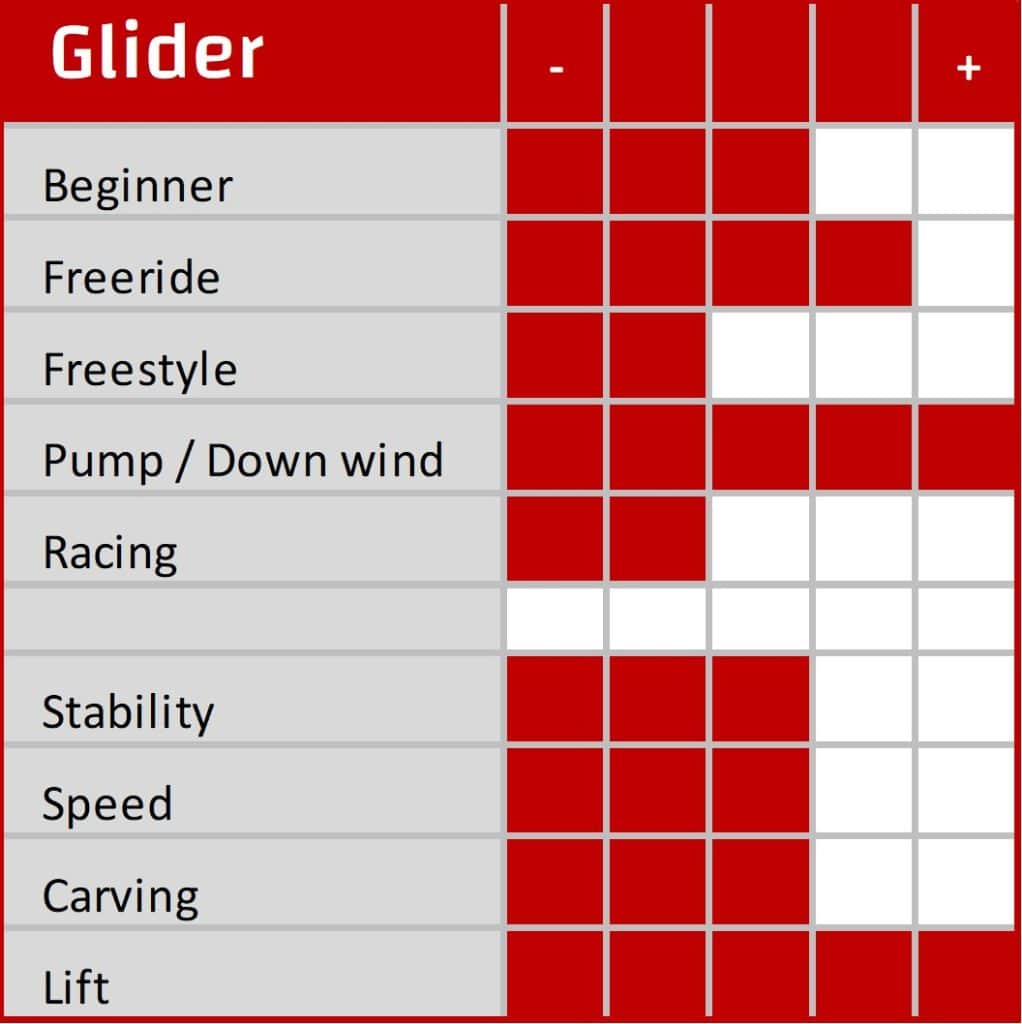
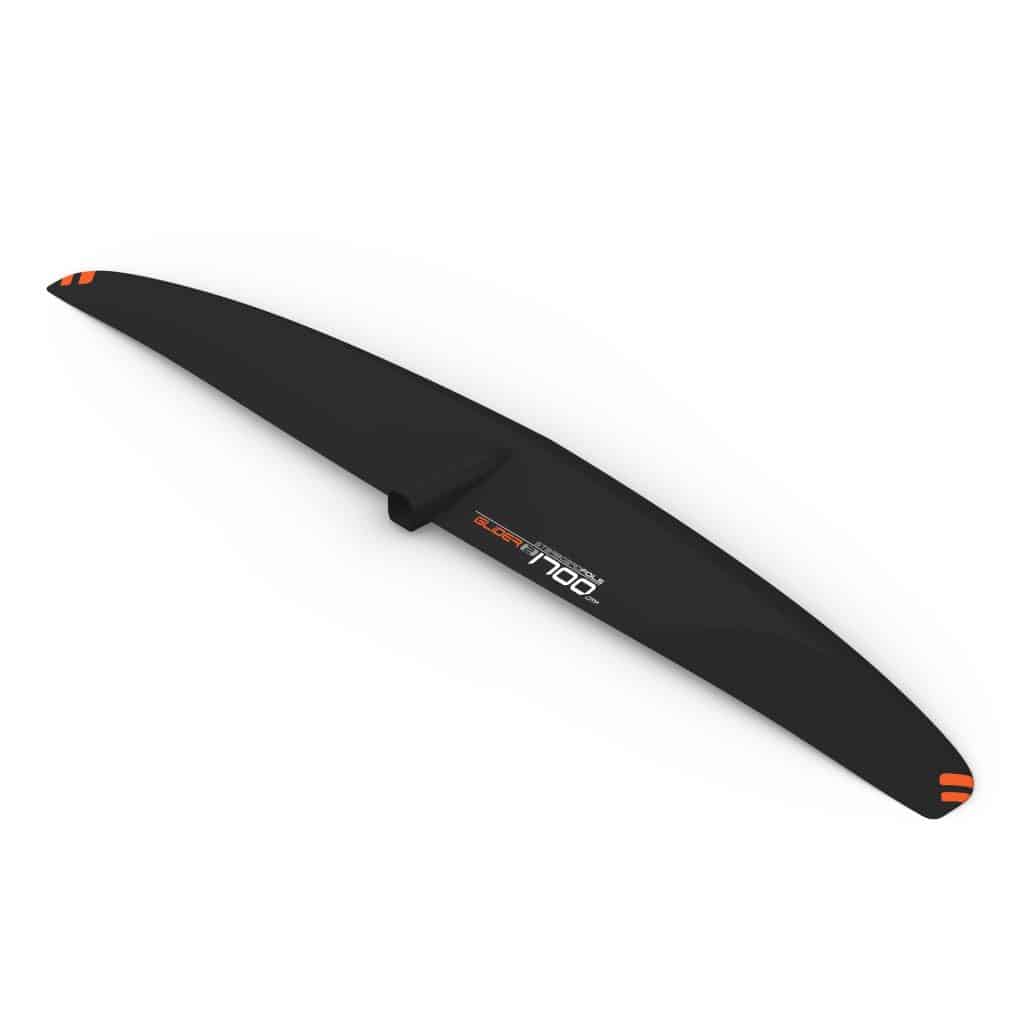
Starboard Glider PRO MKII
You can use the Glider PRO wingseries as a more extreme version of the Glider. Due to its huge aspect ratio and thin shape, these wings are extremely efficient. These wings have an extremely good glide. However, because of the shape, this wing series is also really a lot more technical to foil and give less elevator than the regular Glider. This wing series comes into its own best with downwind wingfoiling on bigger and faster waves. The Glider Pro is also great for pumpfoiling.
The larger sizes 1060 and 1260 are best combined with the PRO 180 H.A.R. stabilizer. The smaller sizes combine well with the PRO 180. Want to use the Glider PRO for pumpfoiling? Then the PRO 180 short is a better choice.
Glider PRO not suitable for windfoiling
We do not think the Glilder PRO is suitable for windfoiling. Due to the relatively thin tips and large wingspan, this wing does not feel very stable and predictable. Also, the Glider PRO gives too little elevator for stable windfoiling.
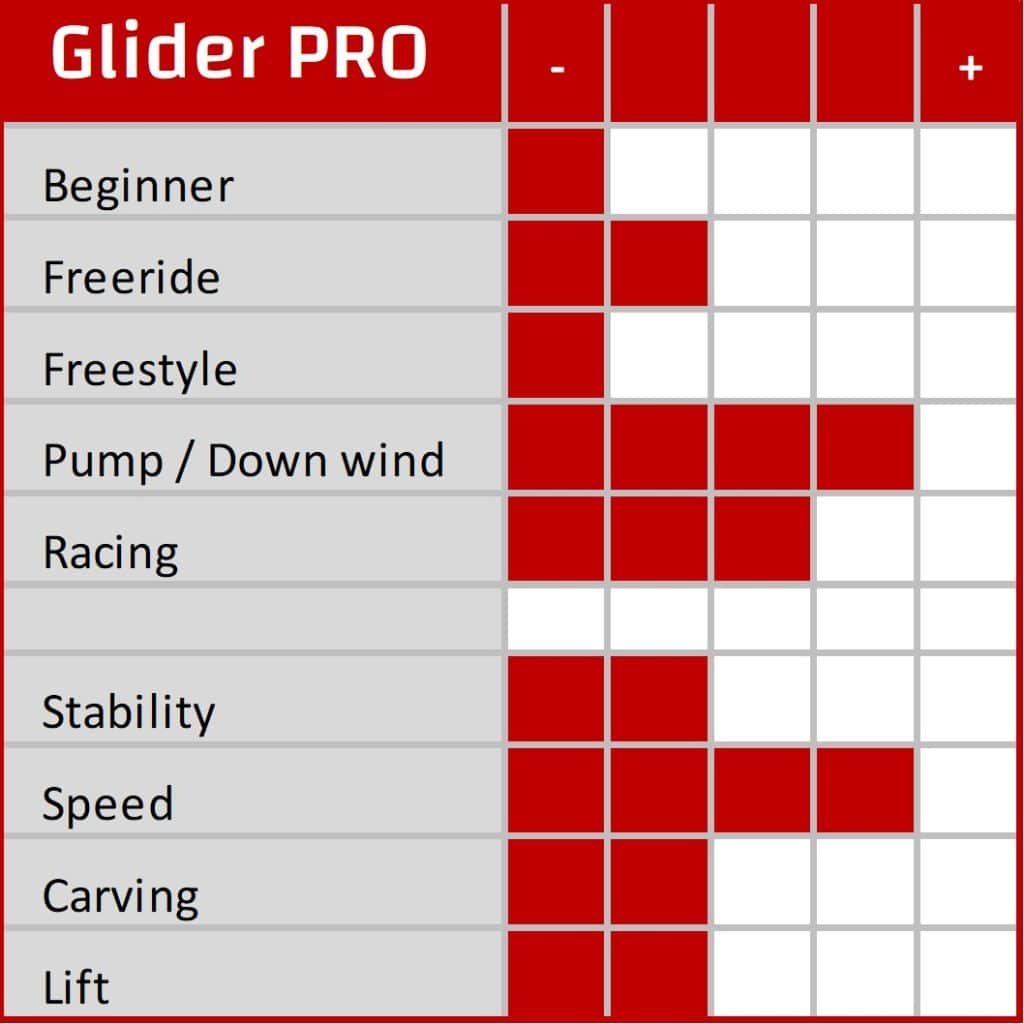
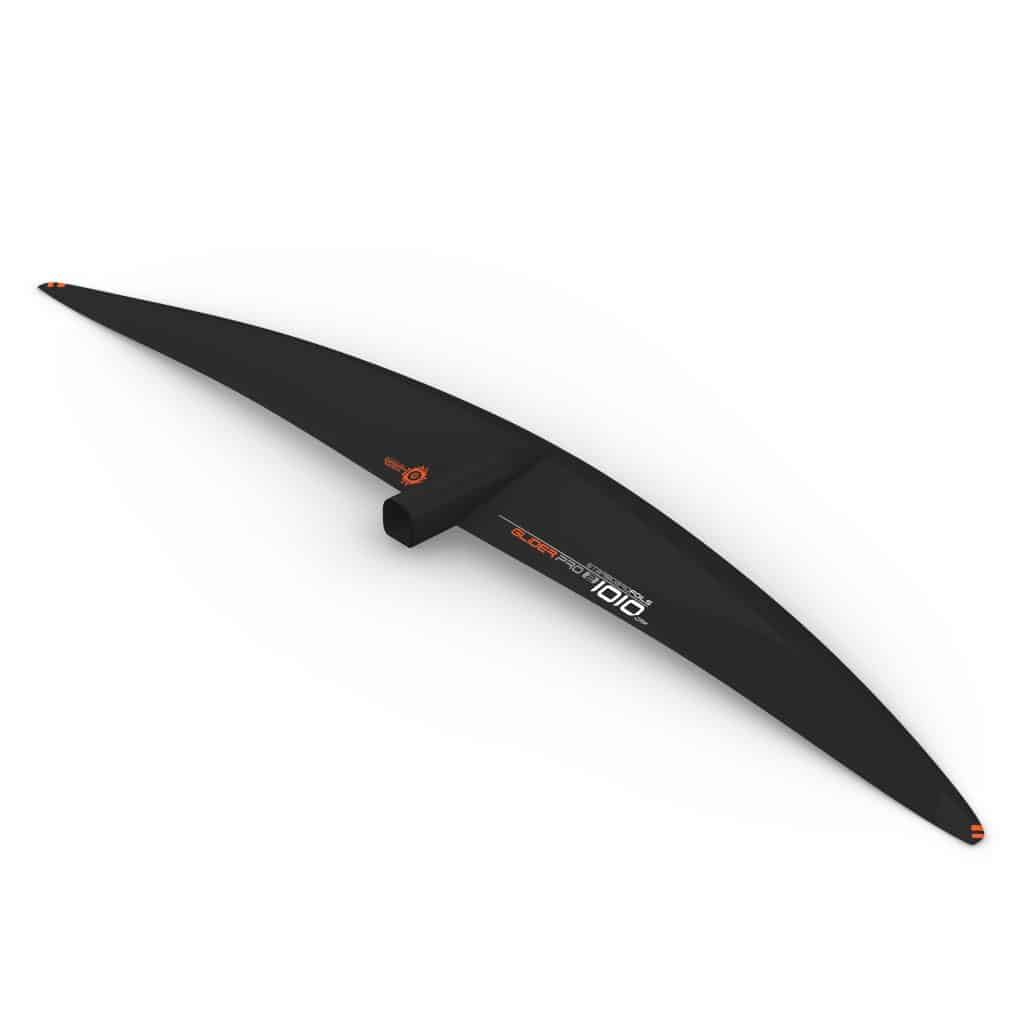
Starboard MF wings
The MF (Martin Fischer) wing series for the Starboard UCS is 1:1 copies of the X-15 one design front wings. The MF series wings are “high end” race wings suitable for experts who want to race and go for maximum performance. In terms of aspect ratio (AR to 14!), this wing series is even more extreme than the Glider PRO. In our experience, these wings perform best upwind and downwind. Half wind we find the MF wings less controllable. Especially in relation to the SLX series.
Besides a high end speed, the MF wings are also extremely efficient with an extremely good glide. As a result, the large sizes can also be used well for downwind foiling. By several top athletes, the MF wings are also used for downwind races.
An MF stabilizer, the MF200, has also been developed especially for this MF series. Despite its relatively large area of 200 cm2, this is a very fast stabilizer due to its extremely thin profile. For better straight-line stability and more elevator, you should opt for the PRO 180 stabilizer.
MF series not suitable for windfoiling
To an even more extreme extent than with the Glider PRO, we do not consider the MF wing series suitable for windfoiling. The foil feels tremendously nervous and unpredictable with these front wings. This is due to the narrow and thin tips which means there is just too much twist for windfoiling.
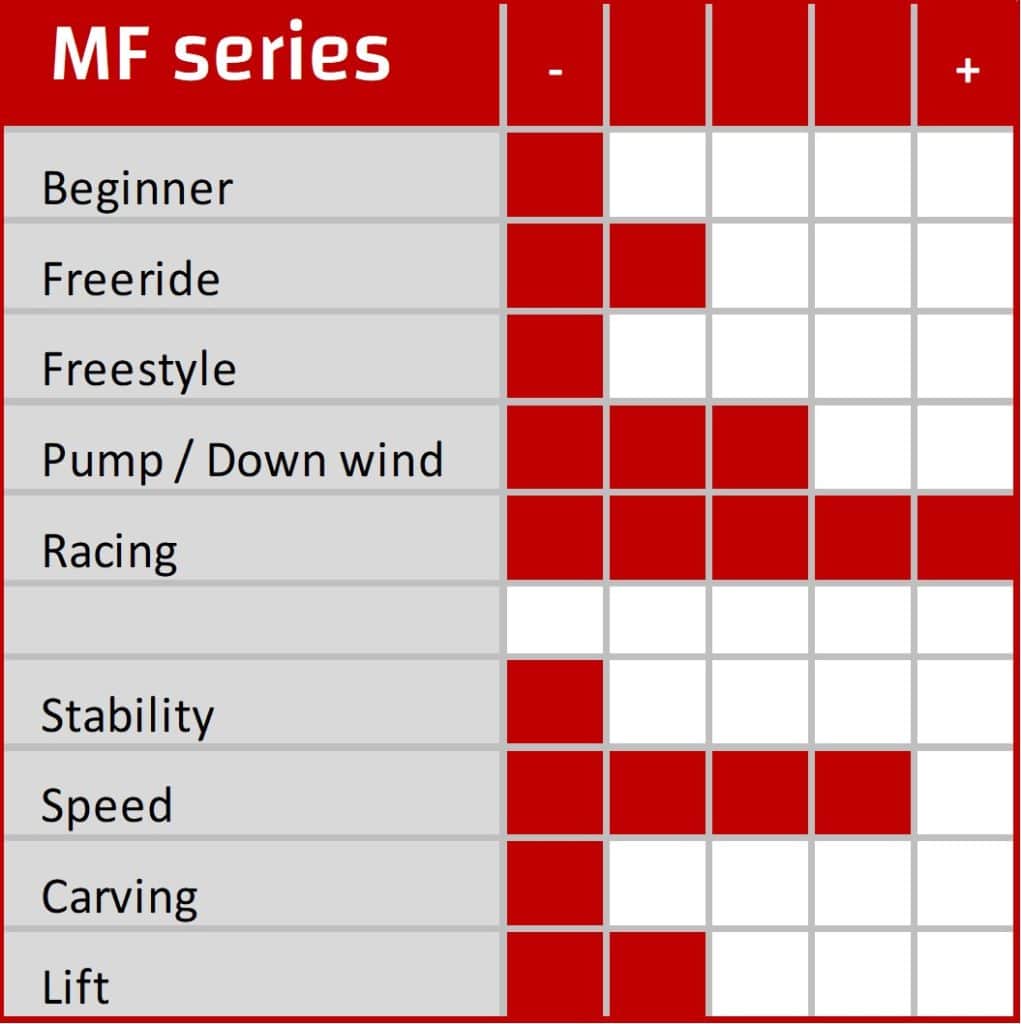
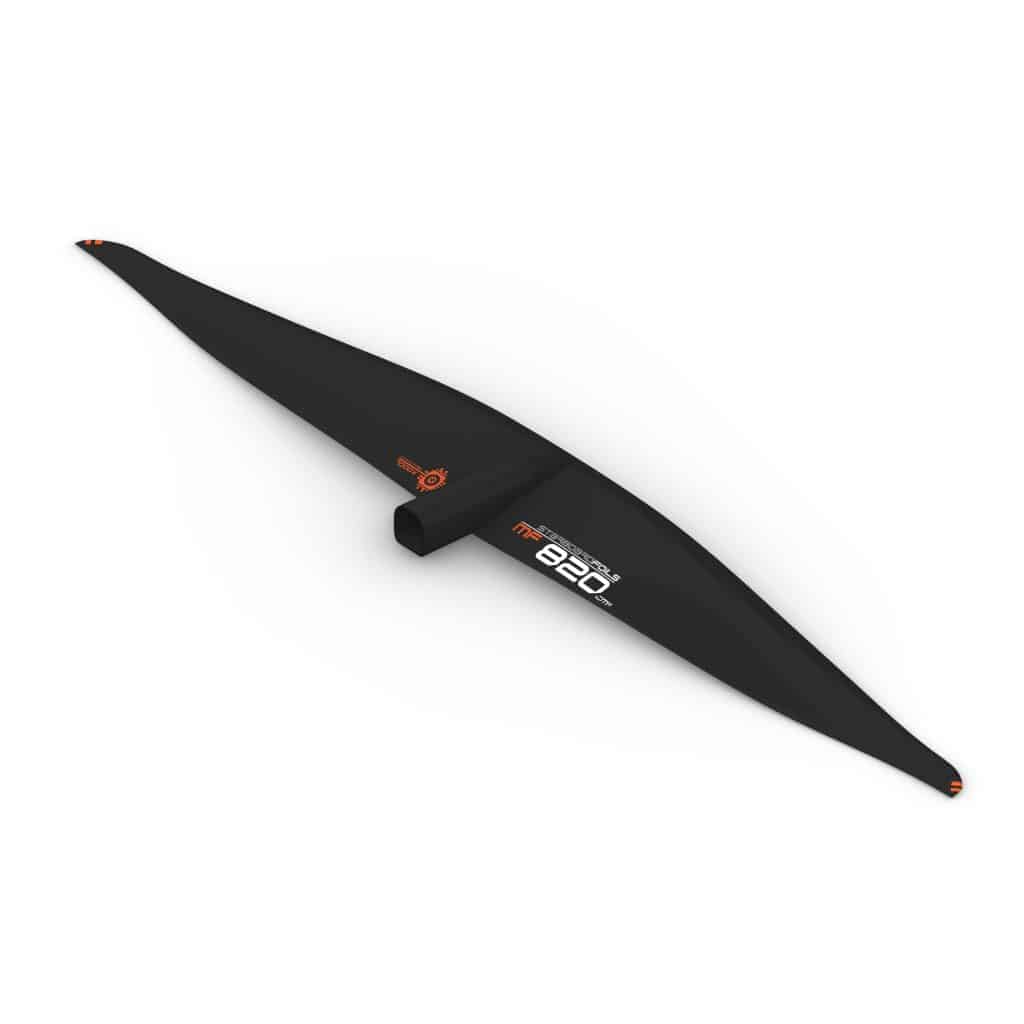
Starboard SLX wings
The SLX wing series is the successor to the well-known SLR series. This high end wing series is designed primarily for slalom racing foiling. The shape is quite similar to the shape of the MF wing series, but the SLX series wings are a lot stiffer than the MF in that they are made of C400 carbon instead of C300 carbon and the profile is also slightly thicker.
Because the SLX wings are stiffer, stability and control is better than with the MF wings. Especially half wind you notice this very well. The larger sizes are designed specifically for course racing (up and down wind). Sizes 665 and smaller are specifically for slalom foiling.
The largest 2 sizes, the 865 and 765 are also suitable for freeriders looking for a faster set up. The handling of these 2 sizes is quite good.
The SLX series front wings combine best with the SLX back wings that are also made of C400 carbon. For course racing, we recommend the SLX 180 H.A.R. and for slalom foiling the SLX 160, 130 or 110.
SLX series for wingfoiling
Although the SLX series was developed specifically for windfoiling, the SLX wings can also be used very well for wingfoiling. In fact, on average we find the SLX series actually better for wingfishing than the MF series! The extreme stability and good halfwind control allow you to push much more controlled. The SLX 865 is suitable for light weather up/down wind. If the wind blows a little harder or you only foil half wind, you can very quickly opt for the SLX 665 or even the 565.
Break your own speed records with the SLX series. You bet!
SLX series for windfoiling
If you want to break your own PR, you can do so with the SLX series. The largest 2 sizes lend themselves well to course racing or light weather freeriding. Sizes from the 665 and smaller are suitable for slalom foils, with the 665 and 565 being for light weather and the 465 and 365 for medium and strong winds.
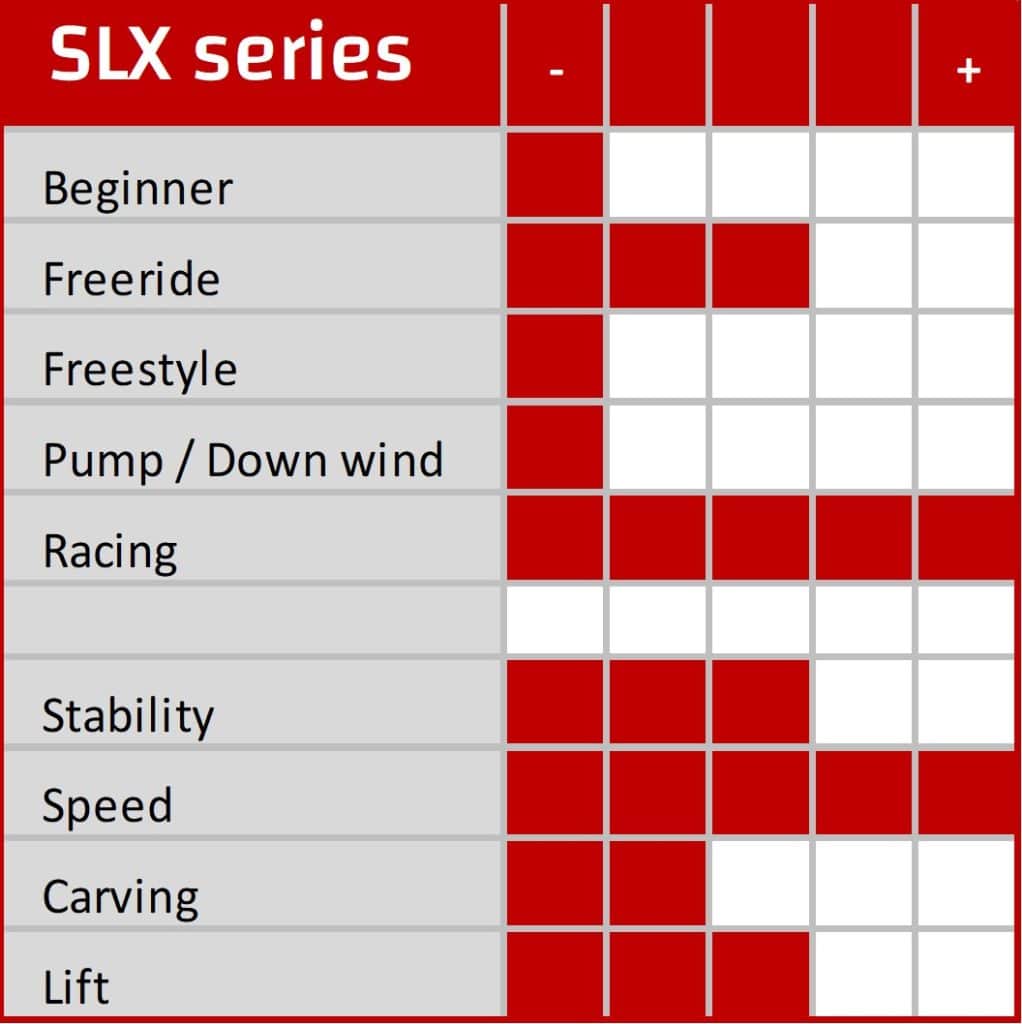
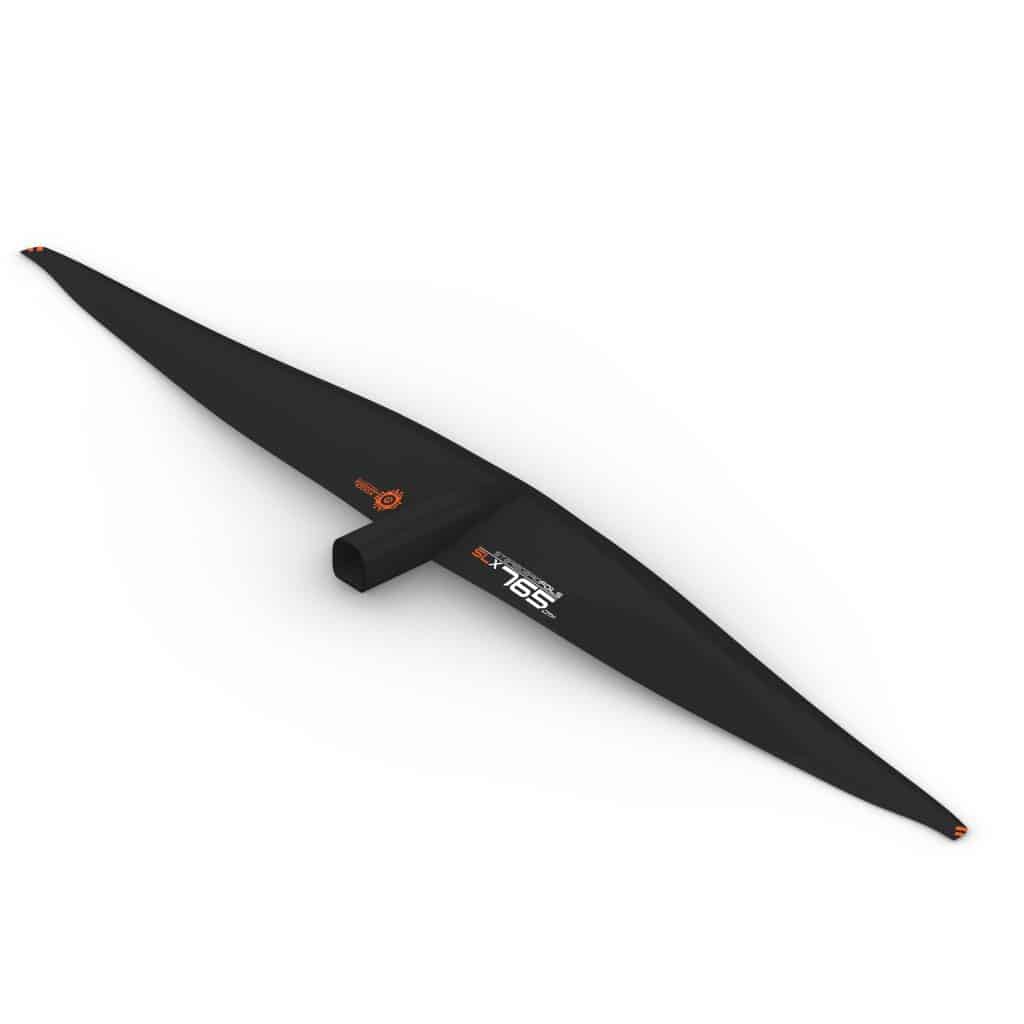
Questions or try it out for yourself?
Have questions about our article or want advice on what is the best set up for you. Let us know and we’ll be happy to help. In addition, we have a large portion of the UCS available in our test range for you to come and test out for yourself. Through our site you can easily schedule a test appointment.
